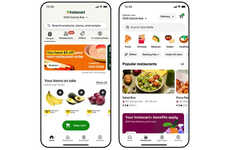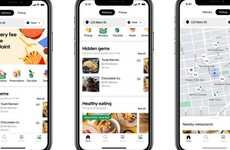
UberEats is Pairing with Local Eateries to Open Virtual Restaurants
Ellen Smith — November 14, 2017 — Lifestyle
UberEats is pairing with local eateries to fill a demand-based gap through offering 'virtual restaurants' which will prepare unique menu offerings, based on the neighborhood it's in.
Although Uber is an incredibly convenient method of ordering takeout, the geographical limitations make it difficult for particular foods to be brought to one's door. For example, a diner looking to order a dish like bulgogi may struggle to find a nearby restaurant. In order to bridge this gap, Uber will take the consumer data gathered through the app to local restaurants, helping those spots set up a 'virtual restaurant' should they have the resources.
Using this data, Uber has helped a number of businesses open a virtual eatery, like Si-Pie in Chicago, a pizza place that now doubles as a virtual fried chicken restaurant.
Although Uber is an incredibly convenient method of ordering takeout, the geographical limitations make it difficult for particular foods to be brought to one's door. For example, a diner looking to order a dish like bulgogi may struggle to find a nearby restaurant. In order to bridge this gap, Uber will take the consumer data gathered through the app to local restaurants, helping those spots set up a 'virtual restaurant' should they have the resources.
Using this data, Uber has helped a number of businesses open a virtual eatery, like Si-Pie in Chicago, a pizza place that now doubles as a virtual fried chicken restaurant.
Trend Themes
1. Virtual Restaurants - Creating virtual restaurants based on consumer data can help fill gaps in the market and offer unique menu offerings.
2. Demand-based Gap - Identifying demand-based gaps in the market can lead to the establishment of virtual restaurants to meet specific consumer needs.
3. Data-driven Expansion - Using consumer data, local eateries can expand their offerings and open virtual restaurants to cater to different cuisines or specialties.
Industry Implications
1. Food Delivery - The food delivery industry can leverage virtual restaurants to increase the variety of cuisines available to consumers in different locations.
2. Restaurant Technology - Innovations in restaurant technology can enable the creation and management of virtual restaurants, optimizing operations and expanding reach.
3. Hospitality - The hospitality industry can benefit from virtual restaurants by attracting new customers with unique menu offerings and expanding their revenue streams.
6.3
Score
Popularity
Activity
Freshness























